Have you ever wondered what that “cortado” you see on coffee shop menus is? Well, it’s a coffee drink made from espresso and steamed milk. But isn’t that just a latte, you ask? That’s a great question! And there’s no shame in asking it — the cortado isn’t a well-known drink. Read on and learn all about the subtle differences between cortado and latte!
What is a cortado?
The cortado is a relatively obscure espresso drink from Spain. Its name stems from the Spanish word “cortar,” which means “to cut” and refers to softening or diluting espresso with milk. In the same sense, you’d say “to cut brandy with water,” which means softening the taste. So you could roughly translate the cortado name to “diluted.”
The name describes cortado accurately. This Spanish drink usually consists of two espresso shots mixed with an equal amount of warm milk. Although cortado uses steamed milk, it has no milk froth — or at least very little when compared to Italian coffee beverages.
Some fans of frothy coffee, such as cappuccino, might balk at the lack of milk foam, but there’s a reason for it. Spanish coffee drinks, in general, don’t feature much foam. This technique allows the steamed milk to blend smoothly with the espresso coffee.
This traditional preparation method gives you a coffee drink with a silky texture that still lets the bold flavor of intense espresso shine through. However, in the U.S., many coffee shops add a bit of milk foam to their cortados to make latte art.
Another essential feature of a cortado is the cortado glass. This coffee drink is traditionally served in a small, 4-ounce glass tumbler — slightly larger than an espresso demitasse cup. A cortado served in this glass is a coffee lover’s favorite drink for a strong yet smooth pick-me-up.

Different cortado drinks
In the coffee shops, you might run into an espresso drink called Gibraltar. It is an American coffee derived from the classic cortado. Traditionally, it is served in a 4.5-ounce Gibraltar rock glass, hence the name. Like a cortado, it is made using two shots (2 ounces) of espresso, but the milk ratio can be higher than in a cortado. Normally the espresso and milk ratio of a Gibraltar is 1:1.
Some coffee shops make no distinction between a cortado and a Gibraltar. However, you may hear some opinions that they are different beverages. A Gibraltar has a slightly richer texture and cooler serving temperature than a traditional cortado due to the additional steamed milk.
You should also be aware that in Spain, “cortado” could refer to any milk and espresso-based beverage. As a result, ordering a cortado in Madrid could get you what you are used to calling a macchiato in the United States.
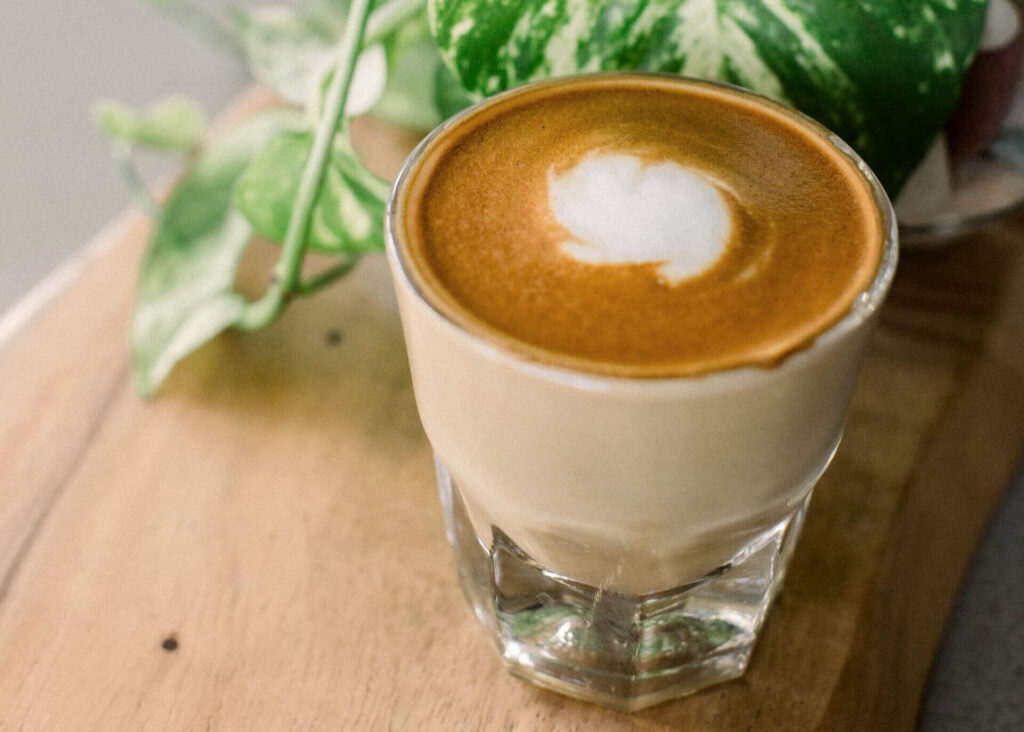
What is a latte?
Café latte — or simply latte — is one of the most popular espresso-based drinks globally. Its name comes from the Italian word “caffelatte” or “caffé e latte,” meaning “coffee and milk.” The latte is an old coffee drink, possibly dating back to the 17th century.
The standard version of a latte contains 1/3 espresso and 2/3 steamed milk. To make the average latte, you’ll pour one shot of espresso into a cup and then fill the rest with steamed milk. On top of the drink — the perfect canvas for stunning latte art!
There isn’t a firmly established standard for how big a latte should be. A traditional latte is typically served in a cup or glass of 8 to 12 ounces in volume. However, as long as you follow the 1:2 espresso-to-milk ratio, you can make a latte pretty much as big or small as you want. It’s nothing unusual to see coffee shops offer lattes as huge as 16 ounces.
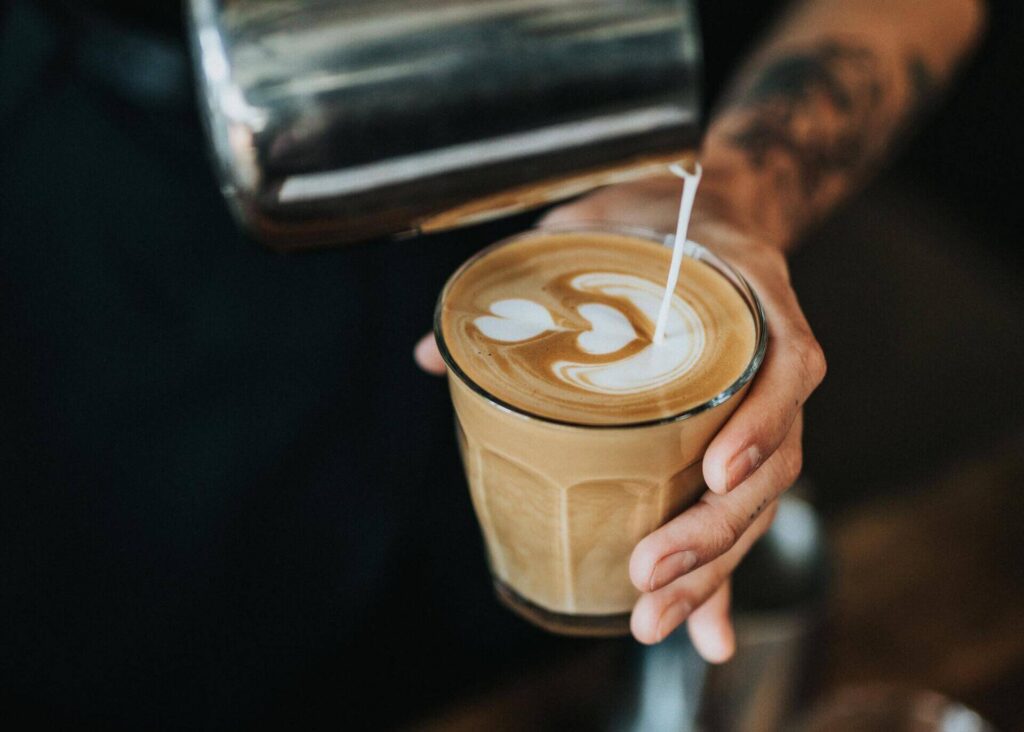
Different latte drinks
Since a latte is not a particularly small drink, there’s plenty of room for customizing it to your taste. For example, you could add an extra shot of espresso for a stronger coffee flavor, replace cow’s milk with soy milk, or add flavored syrups. There can be as many latte variations as there are coffee lovers.
The original, traditional Italian latte is a great place to start exploring other latte drinks. In Italy, served exclusively at breakfast, it has one espresso shot poured on top of warm milk. This latte version doesn’t use foamed milk or sugar, so it has a more pronounced coffee flavor while still being a creamy drink.
Another low-foam latte variant is the flat white from Australia and New Zealand. You can think of it as the halfway point between Italian and international lattes. It uses steamed milk but comes in a smaller glass and has more espresso coffee than a regular latte.
Then there is also the latte macchiato (a happy marriage between a latte and an espresso macchiato), various iced lattes, and tea-based lattes, such as chai latte or dirty matcha latte. So really, when it comes to latte, the possibilities are endless!
If you have finely ground coffee and an espresso machine at home, you can easily start exploring caffé latte variations. You’ll be sticking to tradition too, as the Italians prefer to make their lattes at home.
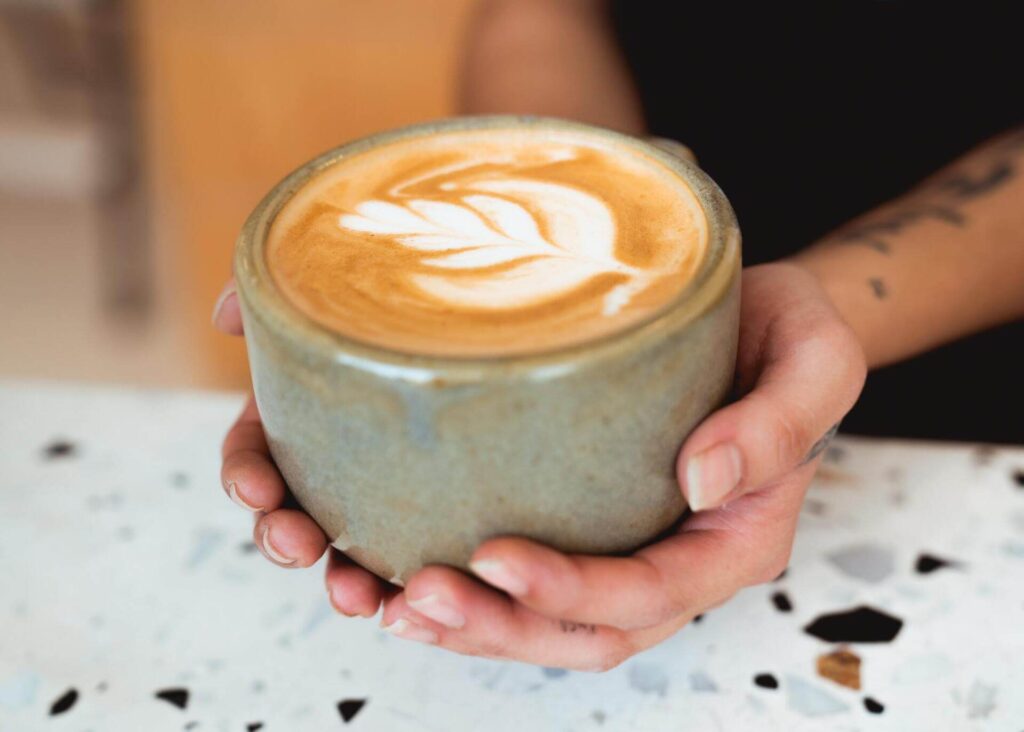
The difference between cortado vs. latte
Now that you know the characteristics of these two coffee drinks, you’ve probably already started figuring out their differences. The main distinctions between a cortado vs. latte are how much milk and espresso are used to prepare them.
Milk
A latte is much more milk-heavy than cortado in terms of coffee to milk ratio. Not only is it served in a larger cup or glass, but the standard latte is also 2/3 milk. On the other hand, a cortado has equal parts milk and espresso.
Espresso
Despite being served in a small glass, a cortado has double the number of espresso shots — two against one. It’s important to note that I am talking about a traditional cortado vs. latte. It’s not unusual for customized lattes to feature an additional espresso shot. That will usually require more milk as well, though.
Foam
There’s also a difference in the amount of foam between the two drinks. A cortado will have very little to no foam. On the other hand, having a thin layer of milk foam in a latte is essential to the beverage’s basic composition — without foam, it’s just not a latte.

Appearance and aroma
The higher proportion of coffee to milk gives the cortado a slightly darker caramel color than the latte’s tan appearance. You’ll also notice a more distinct coffee aroma wafting up from your cortado.
The serving dish and size make up another big difference in appearance between a cortado vs. latte. A cortado comes in a small 4-ounce glass. Meanwhile, a latte is served in a cup or glass as large as 16 ounces.
Flavor
The double shot of espresso naturally gives a cortado a stronger espresso taste. Although the steamed milk smoothens the flavor profile, some of the characteristic bitterness of espresso coffee still comes through. Since it has plenty of creamy milk, a latte has a sweet flavor in comparison.
Caffeine content
Finally, a standard cortado has more caffeine than a latte — 127.2 mg against 63.6 mg. For comparison’s sake, an 8-ounce cup of brewed coffee has 96 mg of caffeine. A cortado will jolt you awake, while a latte is better for enjoying a relaxing coffee beverage.
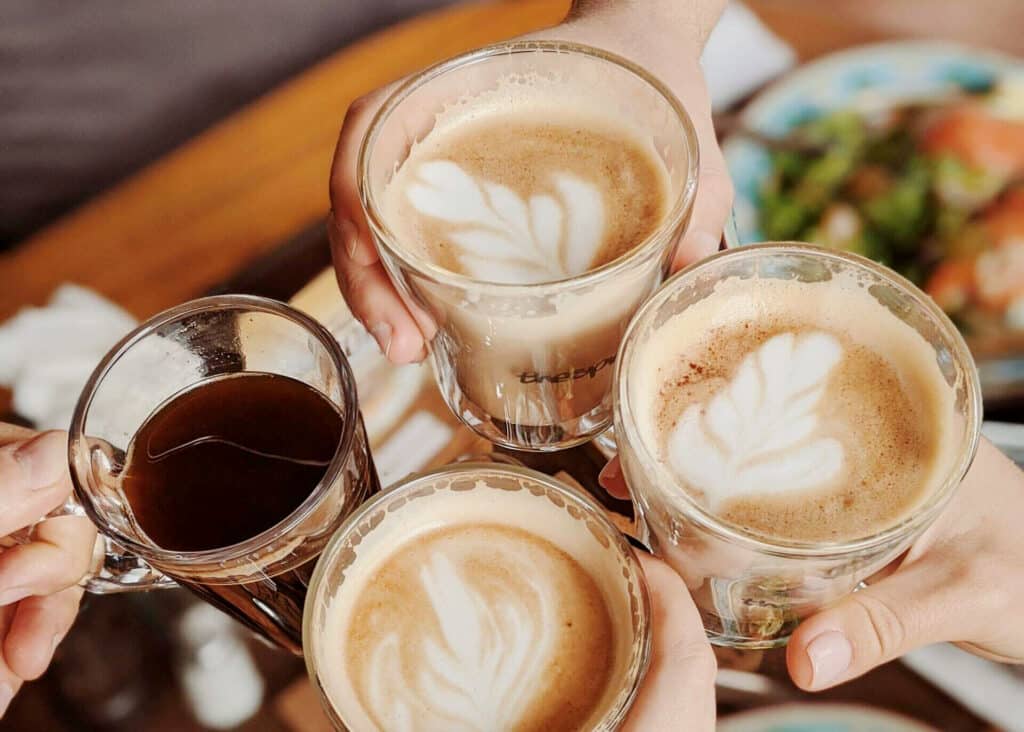
The similarities
Yes, there are plenty of differences between a cortado vs. a latte. But the two coffees also have a lot in common.
Latte and cortado are made from the same ingredients, featuring only espresso and steamed milk. Well, maybe also some sugar if you are so inclined, although, with the cortado, that’s not very common.
As these beverages consist of at least half milk, it softens the intense bitter flavor of espresso. Therefore, these drinks are great options for coffee enthusiasts who don’t like a straight espresso or a café americano (an espresso shot diluted with hot water).
These beverages also make for fantastic gateways to other coffee drinks based on espresso. So whether you like your coffee robust or sweet, a cortado or a latte will soon have you exploring other options. Maybe you’ll fall in love with a piccolo latte served in a cortado-sized glass or a cortadito, a small Cuban coffee made with pre-sweetened espresso.
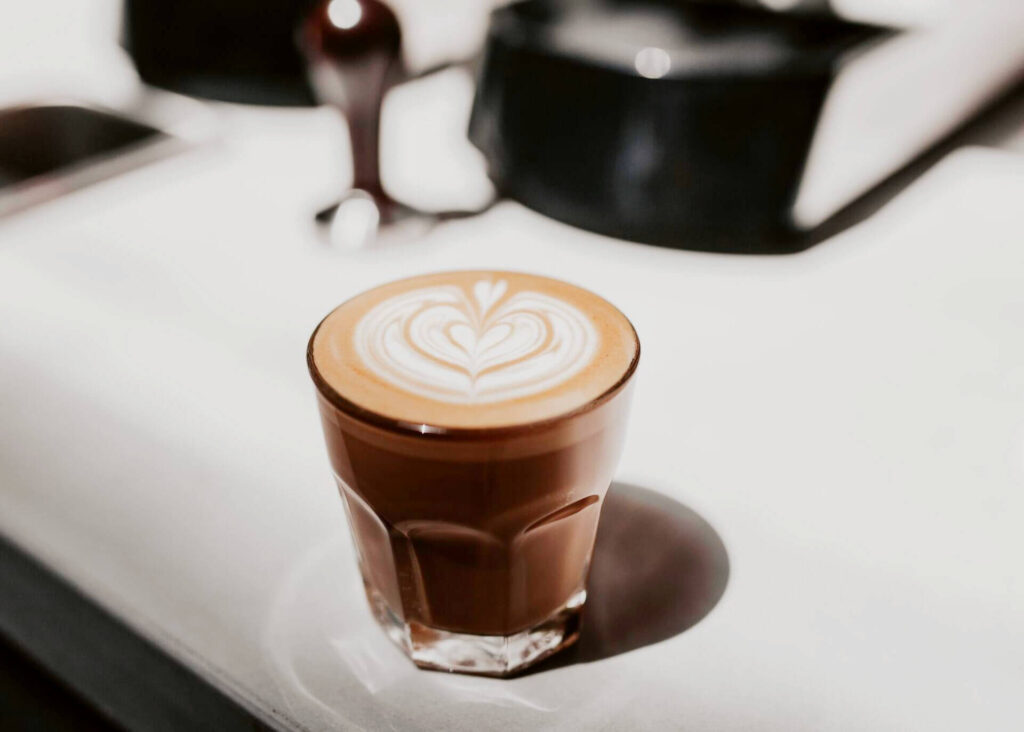
So, in the battle of cortado vs. latte, who wins? I couldn’t tell you — it depends entirely on what you want from your coffee. A cortado will probably be more up your alley if you enjoy a stronger coffee taste. On the other hand, a creamy latte is guaranteed to please a coffee lover with a sweet tooth.
But as fans of coffee, shouldn’t we always be exploring new ways to enjoy our favorite beverage? Yes, we should. So, the next time you see a latte and a cortado on the menu of a coffee shop, try the one you don’t usually drink. You might be pleasantly surprised!
